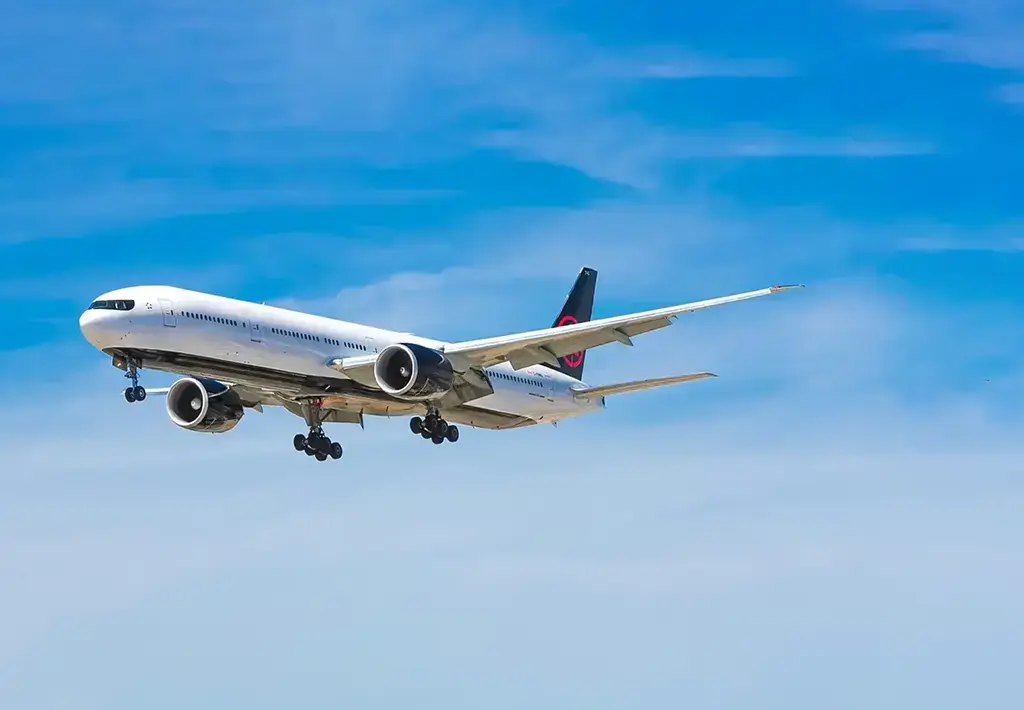Personal travel assistants, flight route specialists and supply chain saviours – artificial intelligence (AI) is transforming aviation.
So far, travellers have welcomed the changes, with 61% planning to use AI to book their next trip. In response, 97% of airlines have plans to develop an AI programme this year.
But what should these plans include to get the most out of this developing technology? We’ll explore how airlines can define a people-centric AI strategy to fully harness the power of this technology in line with overall business goals, while minimising risks.
Why adopt a people-centric approach?
Before determining how to build an AI strategy, it’s worth considering why a people-centred approach is quickly becoming the gold standard. This approach keeps people at the centre of any decision-making process, and considers how AI can best support them, whether they are customers or employees.
This strategy, backed by aviation safety experts, is widely considered critical to successful integration, with 53% of business leaders agreeing that retaining human influence on AI solutions is very or extremely important.
For airlines, the approach means considering how this emerging technology can enhance the customer journey and support aviation workers, freeing them up from mundane tasks for more value creation. In this way, AI becomes a tool and collaborator, supporting the people involved to do their best work.
Setting strategic objectives
With this perspective, airlines can begin their AI strategy by defining objectives that are aligned with business goals. Having clarity over these will help drive integration and engagement of this new technology, avoiding a fragmented and ineffective approach.
The highly competitive commercial aviation market faces several challenges amid rising demand for air travel, which is now exceeding pre-pandemic levels. In response, airlines seek ways to increase efficiency, boost customer satisfaction and unlock new revenue streams.
However leaders choose to use AI to address these challenges, objectives must be aligned throughout the organisation, and measurable targets must be identified to determine success.
Assessing capabilities and roadblocks
AI and machine learning (ML) models rely on comprehensive and high-quality datasets to analyse, leverage and learn from. However, many airlines find they have duplicate datasets across multiple systems, isolated data silos or inaccurate data. Others simply aren’t capturing all the potentially useful data needed to produce impactful results.
This fragmentation and inaccuracy make it challenging for AI to access and effectively apply information to automated workflows. In turn, it produces results that can’t be trusted, quickly leading to limitations for growth or development.
To combat this, airlines can aim for to achieve a single source of truth for their data, created through a well-executed data strategy that involves its use in AI as a foundational pillar.
Legacy systems also present a challenge when adopting new technologies. While they have been a reliable backbone for the aviation industry for some time, many dated systems cannot easily integrate new technology, so determining areas for modernisation is critical. For a deeper dive into modernising systems, take a look at our whitepaper: How To Improve IT Modernisation Decisions in Aviation.
Foundations must be in place as an initial step for any successful long-term strategy. Before proceeding, thorough data and software assessments can identify potential technological obstacles.
Defining people-centric opportunities
The opportunities to involve AI are growing every day. Whether it’s to enhance the customer experience to provide a seamless, frictionless journey or to automate manual work – there are countless ways to leverage this technology.
We’ve compiled ten high-impact cases focused on improving customer loyalty, reducing operational costs, driving productivity, and unlocking new revenue sources. Discover them in our whitepaper, How to Seize the AI Opportunity in Commercial Aviation.
When defining a strategy, executives should consider each use against the airline’s business goals, AI maturity and potential impact.
Improving, enhancing, synthesising
A key component of any AI strategy must be accounting for time to build its use slowly, ensuring the complex strategy is introduced over time. We encourage a crawl, walk, run approach to AI adoption – allowing businesses to embrace this technology step by step, rather than all at once.
The process begins with using AI to improve manual efficiencies by automating time-consuming tasks. This then builds to enhancing processes by finetuning AI models to align with specific workflows. Finally, autonomous agents can be introduced, allowing AI to take an active role in the decision making. With our industry accelerator, this technology can be developed further to achieve multi-agent autonomous teams.
This step-by-step process allows businesses to continuously build trust and monitor the technology. To do so, it’s crucial to understand and know how it functions at every step, with data usage logged for transparency. This transparency is essential to ensure it aligns with both regulatory standards and business values.
Continuous monitoring of the system’s performance then allows for understanding and identifying any potential issues or biases before continuously optimising for success. By keeping a human in this loop, adjustments and improvements can be made to ensure the systems in place maintain a people-centred approach aligned with regulatory and ethical standards.
Harnessing expertise for AI in aviation
Once a robust strategy is in place, it’s time to leverage expertise to integrate AI into the business. This could involve sourcing in-house talent to determine the next steps or consulting a tech partner on AI readiness and data preparedness.
To get started, identify potential use cases and unlock the power of this technology, download our whitepaper, How to Seize the AI Opportunity in Commerical Aviation. Or, visit our industry page to learn more about how to harness the potential of travel technology solutions.



